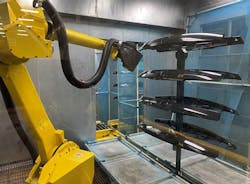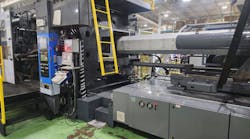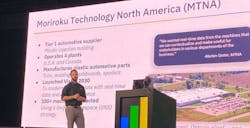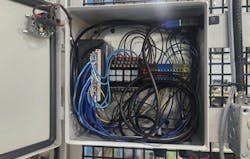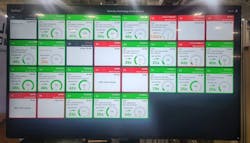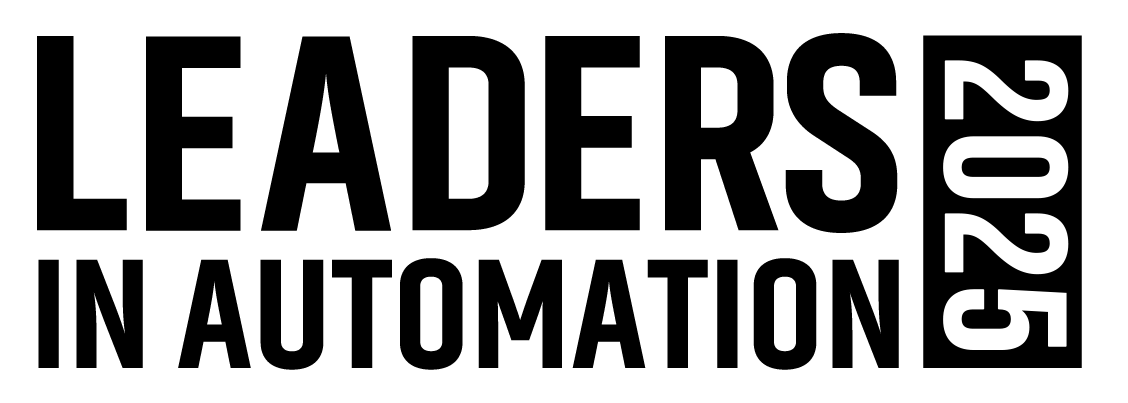MTNA Transforms Legacy Manufacturing Ops with Smart Machine Monitoring
Key Highlights
- MTNA proved their concept with a single machine and a Raspberry Pi before deploying industrial-grade Opto 22 groovRIO units across numerous machines at approximately $1,000 per machine.
- Using MQTT Sparkplug and a unified namespace architecture, they standardized data from dozens of machines with different controllers and protocols, achieving their "single pane of glass" vision with real-time visibility across all four facilities.
- Beyond eliminating manual logging, MTNA created a scalable digital infrastructure that positions them for predictive analytics, machine learning and future IIoT initiatives.
When COVID-19 exposed critical weaknesses in their supply chain, Moriroku Technology North America (MTNA) knew something had to change. The tier-one automotive supplier, which produces plastic components for dashboards, trim and spoilers across four facilities in the U.S. and Canada, faced a challenge familiar to many manufacturers: they needed real-time visibility into their production operations.
In response to the pandemic's disruptions, MTNA management launched its Vision 2030 Initiative with an ambitious goal: see live production data from all four facilities on a single screen. They decided to start at the heart of their operation — their injection molding machines. The obstacle to achieving this goal was MTNA’s legacy automation infrastructure. And the company was not in a position to rip and replace its automation infrastructure, as ripping out all the controllers and replacing them with new PLCs would have been prohibitively expensive and time-consuming. Plus, the downtime required for such a massive overhaul would have cost more than the controllers themselves.
For MTNA's engineers, the legacy equipment realities of their operations made the idea of connecting 100 injection molding machines across four different sites into a single, unified namespace seem nearly impossible. Each facility had been acquired separately, resulting in zero standardization. Every machine had a different controller, different PLC platforms and different communication protocols.
To support operations data gathering, workers walked the floor every 15 minutes after a shift, writing production data on clipboards — a system guaranteed to produce errors that would only be discovered after the fact, when it was too late to prevent costly downtime. The dark asset problem
"Since manufacturing is largely a brownfield world, you've got equipment that's running and adding value to your business, but you don't have any visibility to what's going on in real time on that equipment," said Dan White, director of technical marketing at Opto 22 during his presentation about MTNA at the 2025 Inductive Automation Ignition Community Conference. "Perhaps that machine has a PLC on it, but the PLC is old, it doesn't have an Ethernet connection and it's tough to get data out of it because its locked behind some vendor's custom, proprietary control program that you just can't access."
Even when data could be extracted, it often came without context with generic "XYZ" or "123" labeling which makes it meaningless without units or proper identification.
The setup was straightforward: install a groovRIO unit in a nearby cabinet, tap into signals from the existing PLC outputs using groovRIO's software-configurable I/O, and capture key signals without disturbing operations.
This common situation, which existed at MTNA, exemplified what White called "the classic dark asset problem."
Starting small with UNS
Since MTNA clearly needed a different approach than rip and replace, they made an early strategic decision to develop a unified namespace (UNS) architecture using MQTT Sparkplug, an open-source specification for industrial applications that defines a standard way of structuring messages, managing states, and organizing topics to improve Industrial Internet of Things (IIoT) interoperability and integration by providing a consistent framework for communication between devices and applications.
But they didn't start with all 100 machines, or even 10. They started with one. Using a Raspberry Pi, MTNA's team proved they could tap live signals from an existing machine and publish that data over MQTT to a broker without causing significant downtime. They used Ignition software from Inductive Automation with CirrusLink's MQTT Distributor module, starting with a single data point and a free two-hour license.
From the on-premises Ignition gateway, data flowed upstream into an Ignition gateway in Microsoft Azure Cloud. This enabled MTNA to achieve key aspects of its 2030 Vision of having a UNS in practice that had data from multiple sites flowing into a single structured namespace.
"MTNA proved you don't need the big budget to do this. You can start small," White emphasized. However, he adds an important caveat: "Sometimes devices like a Raspberry Pi are fine in the lab, but don't necessarily translate to a full production environment. Ultimately, it's just not an industrial-grade device that can survive the harsh environment you see in an injection molding facility."
$1,000 per machine budget
For their production rollout, MTNA established a budget of approximately $1,000 per machine. They needed an affordable solution that could scale across the entire enterprise while capturing key signals like mold changes, water flow rates and open-close cycles, all of which are crucial metrics for tracking cycle time and machine availability. Most importantly, they wanted a universal solution that wouldn't require complicated bills of materials for every machine. Whether a machine used a 4-20 mA signal or a 0-10 Volt signal, they wanted one flexible device that could handle it all without extensive coding.
They chose Opto 22's groovRIO.
The setup was straightforward: install a groovRIO unit in a nearby cabinet, tap into signals from the existing PLC outputs using groovRIO's software-configurable I/O, and capture key signals without disturbing operations.
"The key isn't just replacing paper and spreadsheets," White noted. "The key is to find practical ways to bring more real-world measurements, more equipment, more information into the digital conversation."
GroovRIO's web-based development environment allowed MTNA's team to configure everything through a browser using basic menus and checkboxes, including security and networking, configuring I/O points.
Once configured, connecting to the MQTT broker was completed by navigating to the Data Service settings and entering the broker information. No coding or modifications to the original control system was required.
Scaling across the enterprise
Within just a few months, MTNA scaled this approach across dozens of machines at all four facilities. Each machine received its own groovRIO that published data directly to an on-premises Ignition gateway. Within these gateways, MTNA modeled the data into user defined types (UDTs), adding contextual information like work cell locations, facility locations and engineering units.
Full line views allowed operators to quickly evaluate which machines were running hot, which were behind, and where downtime or shortages were causing bottlenecks.
But the real breakthrough was delivering standardization to their assets. Every single machine, regardless of what controlled it, now had identically formatted data. All machines looked the same side by side in the system.
From the on-premises Ignition gateway, data flowed upstream into an Ignition gateway in Microsoft Azure Cloud. This enabled MTNA to achieve key aspects of its 2030 Vision of having a UNS in practice that had data from multiple sites flowing into a single structured namespace.
Tangible, real results
The transformation delivered immediate benefits. The clipboards disappeared, replaced by digital systems reporting in real time. Ignition dashboards now give stakeholders across the business access to production metrics updated every second across all machines.
By seeing what is happening in real time, MTNA can catch problems sooner, maintain consistent cycle times and avoid delays. They gained visibility into targets versus actual counts, cycle times, downtime and scrap rates—the kind of detailed insight that only comes from connected machines feeding real, contextualized data into a unified system.
Full line views allowed operators to quickly evaluate which machines were running hot, which were behind, and where downtime or shortages were causing bottlenecks. The full plant view—every machine on one screen, that single pane of glass they'd dreamed of—became reality.
A digital foundation to build on
Perhaps most importantly, MTNA now has the digital foundation to move forward with more advanced initiatives. With their UNS architecture in place, they can turn pursue predictive analytics. MTNA is already exploring expanding their groovRIO deployment to conveyor systems and vision-guided quality control systems, following the blueprint they've established.
"Doing this is actually pretty cheap and easy," White concluded. The story of MTNA proves that even in complex brownfield environments with legacy equipment, the path to digital transformation doesn't require massive capital investment or complete system overhauls, just the right approach, the right tools and a willingness to start small and scale smart.
